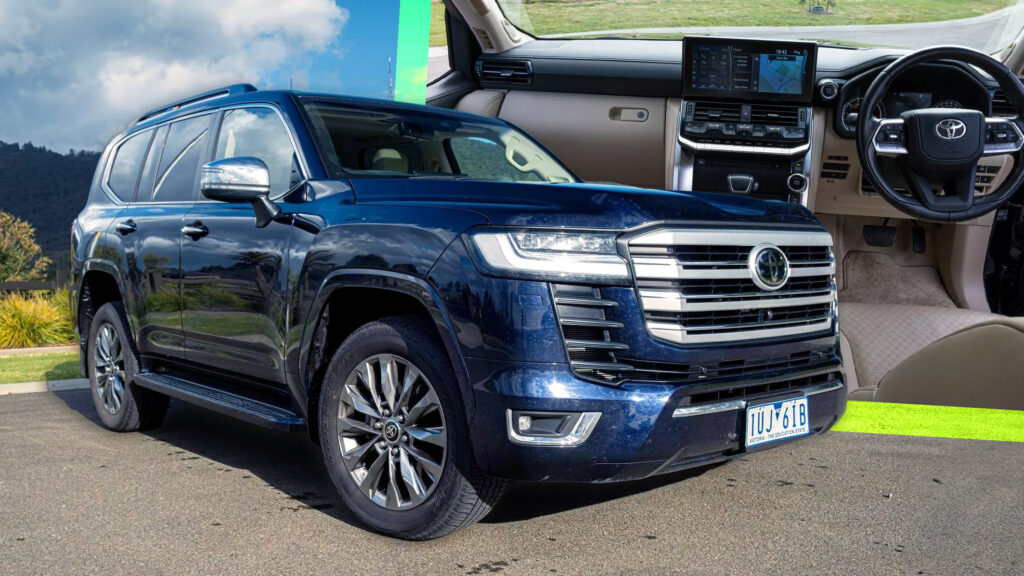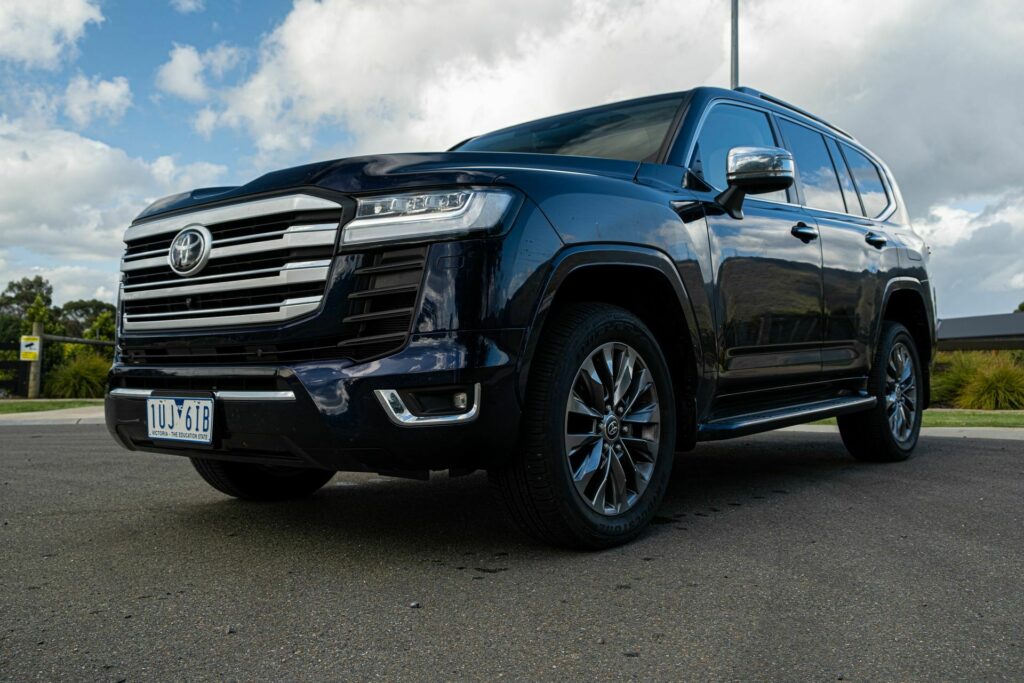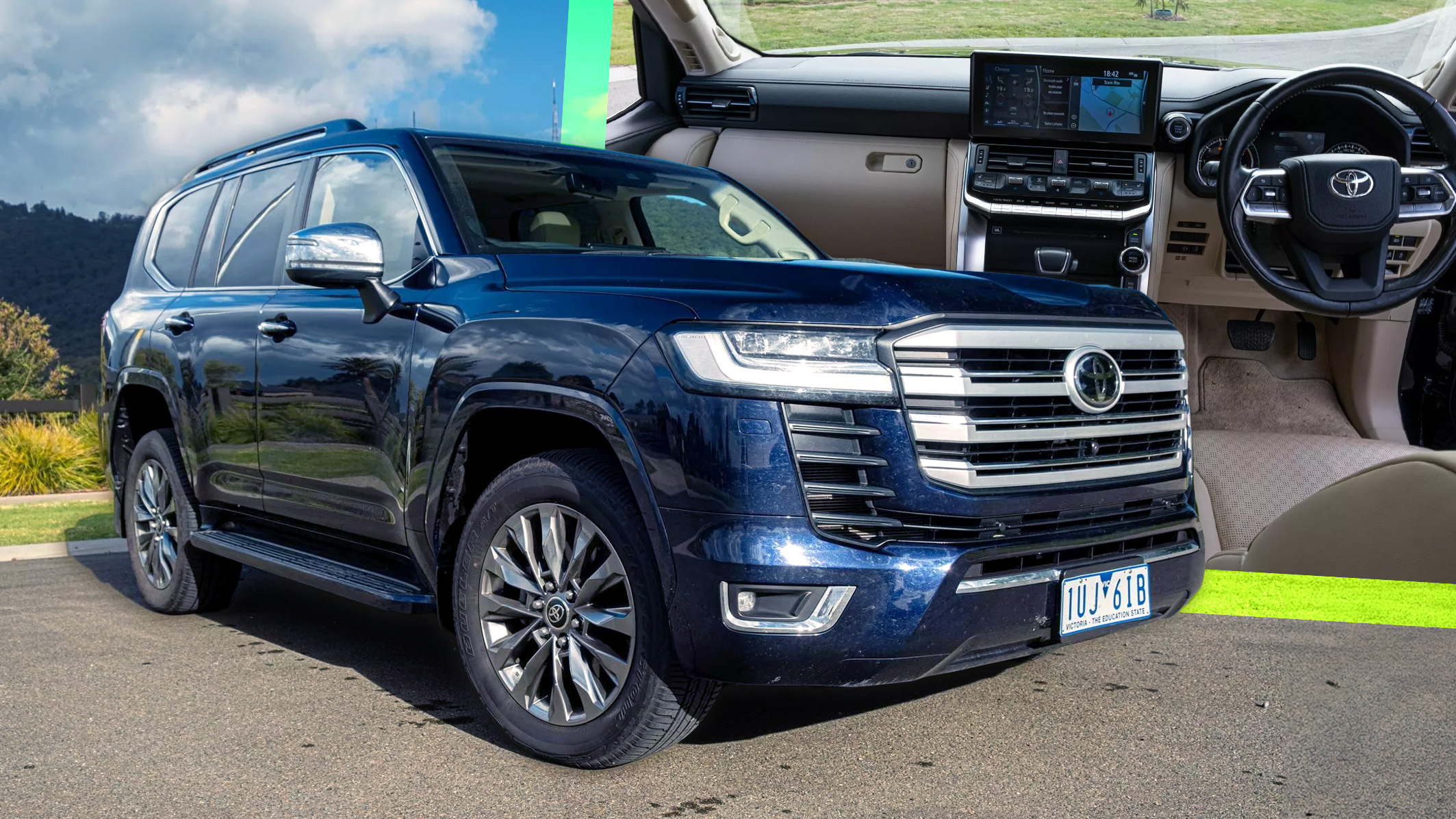
The Toyota Land Cruiser 300 costs as much as a Land Rover Defender but is it as good?
January 13, 2024 at 12:38
It’s always a big deal when a new generation of Toyota Land Cruiser is released so it’s little surprise that customers were excited when the 300-series model was first announced in mid-2021. It proved to be so instantly popular that waiting lists in Japan quickly swelled to four years, although COVID-19-related issues and supply shortages also played a role in increasing wait times.
Down Under, the Land Cruiser 300 has been available since late 2021 and shortly after North America’s new Land Cruiser was unveiled, we thought it would be worth seeing if the global model is worthy of all the hype and if it is a fitting successor to all the legendary SUVs that have come before it. Let’s dive in.
The details
The Toyota Land Cruiser has long been a staple among families and off-road enthusiasts in Australia so it’s little surprise that the local range is quite extensive with no less than six variants on offer. The range kicks off at $102,769 ($70,025) including all on-road fees for the entry-level GX and then jumps to AU$117,138 ($79,816) for the GXL, AU$130,191 ($88,710) for the VX, AU$148,595 ($101,251) for the Sahara, AU$155,658 ($106,063) for the GR Sport, and AU$156,728 ($106,772) for the Sahara ZX. Not cheap then and naturally, we opted to test out the flagship model, the Sahara ZX.
advertisement scroll to continue
Quick facts
There are plenty of reasons to get excited by the Land Cruiser 300. For starters, it is underpinned by a new steel ladder chassis and all variants are driven by a 3.3-liter twin-turbocharged diesel V6 that replaces the V8 of the older model.
Read: 2024 Toyota Land Cruiser Coming To Europe With A 201 HP 2.8-Liter Turbodiesel
While some traditionalists were none too pleased with Toyota’s decision to drop the V8, particularly given that the Nissan Patrol is still offered with a naturally-aspirated eight-cylinder, the diesel V6 has plenty of grunt, churning out 227 kW (304 hp) and 700 Nm (516 lb-ft), healthy gains over the 200 kW (268 hp) and 650 Nm (479 lb-ft) of the old V8 diesel. Mated to the new engine is an Aisin 10-speed automatic transmission. Over the combined cycle, Toyota says the Sahara ZX consumes 8.9 l/100 km (26.4 U.S. mpg), 11.3 l/100 km (20.8 U.S. mpg) over the urban cycle and 7.6 l/100 km (30.9 U.S. mpg) on the highway.
The Sahara ZX occupies an interesting position within the Land Cruiser line-up. While it is the priciest model on offer, it is not the most off-road-focused. That mantle is instead held by the GR Sport which has front and rear locking differentials and Toyota’s advanced e-KDSS electronically controlled active roll bar system, features that the Sahara ZX misses out on. Where the Sahara ZX stands apart from the GR Sport is in the luxury and comfort departments, being designed as a variant better suited to road driving yet still offering some very solid off-roading credentials.
Brad Anderson / Carscoops
In addition, the Sahara ZX is solid exclusively as a five-seater whereas the GXL, VX, and Sahara can be ordered with seven seats, making them more appropriate for large families.
Big on luxury
From a visual standpoint, the Sahara ZX looks like a real luxury proposition from both the outside and in the cabin. Compared to lesser variants, it adds a set of 20-inch silver alloy wheels and also has distinctive front and rear bumpers, unique wheel arch moldings, different side steps with illumination, and new rear mudguards. It is also the only variant sold in Australia with a rear torque-sensing limited-slip differential and comes standard with adaptive variable suspension.
We found spending time inside the Land Cruiser Sahara ZX to be an absolute joy and while it is much more premium than the 200-series model, the Sahara ZX cabin isn’t much different than the cheaper Sahara. In fact, the only upgrades made are new trim on the steering wheel, center console, and doors, and the addition of 3 USB charging ports.
Brad Anderson / Carscoops
Fortunately, the VX and Sahara are very well-equipped. Key features include a 7-inch digital display in the cluster, a 12.3-inch infotainment screen with satellite navigation, four-zone climate control, and a 14-speaker JBL premium audio. There is also a large head-up display and front-seat passengers get to enjoy 8-way adjustable seats with heated and ventilated functions, although there is no massage function, a shame given how pricey the 4×4 is.
Other welcome features include a cool box, heated and ventilated 2nd row rear seats, a heated steering wheel, and a rear-seat entertainment system with dual screens.
advertisement scroll to continue
Toyota has done a fine job of making the Land Cruiser 300 approachable and easy to operate. It has done so by using perhaps the perfect combination of physical buttons and switches with controls and settings housed within the big and bright infotainment screen. Among the functions that can be controlled with real buttons include the climate control and important audio settings, as well as each of the available drive modes.
Not everything is perfect
The infotainment system supports both wired versions of Apple CarPlay and Android Auto and also includes a neat function where both the native software and CarPlay/Auto can be displayed simultaneously. What’s not so good is the fact that the Land Cruiser 300’s standard infotainment software is outdated with below-average graphics and a rather confusing layout.
The big head-up display also leaves a little to be desired. While it functions well and displays all the important information one could want, it becomes almost completely invisible if you’re wearing polarized sunglasses. Yes, there are plenty of other head-up displays on the market that suffer from the same issue but the Land Cruiser’s is worse than most.
This brings us to another technology-related issue with the new 300-series: the lane-centering assist function. Toyota has equipped the new model with a host of features that owners of previous-generation models could only dream of, including autonomous emergency braking with pedestrian and cyclist detection, adaptive cruise control with stop-and-go speed control, and lane-centering. While the first of these two features work well, the lane-centering borders on infuriating as it is unable to keep the vehicle in the center of the lane and will routinely bounce you between the lines. This isn’t an issue during urban driving but it proved frustrating during our 1,500 km (932-mile) round-trip between Melbourne and Adelaide.

What is it like to drive?
Throughout our week with the Toyota, we drove it in suburban areas, country roads, and plenty of long stretches of highway. It proved to be relatively efficient, averaging 10.4 l/100 km (22.6 U.S. mpg) and while that’s above the claimed 8.9 l/100 km, it is still respectable for a vehicle that weighs over 2,600 kg and has this much performance on tap. After all, it can hit 100 km/h (62 mph) in around 8 seconds.
Both the Sahara ZX and GR Sport offer six different driving modes; Eco, Comfort, Normal, Sport S, Sport S+, and Custom, while lesser versions only offer the Eco, Normal, and Sport modes. Important aspects of the Land Cruiser are tweaked depending on the drive mode, including the throttle, steering, transmission, and suspension. We found the sweet spot to be the Sport S mode.

In Eco, Comfort, and Normal, the ride is very soft and while that’s a good thing most of the time, it’s not so nice at higher speeds and over road inconsistencies where it feels a little too floaty. This comes despite Toyota conducting extensive tuning of the Land Cruiser 300 in Australia to suit local roads. Thankfully, the Sport S and Sport S+ modes stiffen things up nicely.
Read: 2024 Toyota Land Cruiser Returns To America With Hybrid Power And Huge Price Cut
The twin-turbo V6 and the 10-speed auto gearbox work beautifully together. Pin the throttle and the Land Cruiser roars to life, producing quite a nice note (for a diesel that is…) and the acceleration is smooth and consistent up to highway speeds. Those who plan to use it for towing will be pleased to know it has a rated towing capacity of 3,500 kg (7,716 lbs), more than enough for large caravans, trailers, and boats. The gearbox complements the engine well and provides smooth and precise shifts, although it certainly isn’t the quickest shifting box out there.
For the 300-series Land Cruiser, Toyota opted to make the doors, bonnet, roof, and front guards from lightweight aluminum, helping to shave as much as 200 kg (440 lbs) from the overall weight. While the weight savings are nice, one quirk is the fact that the aluminum bonnet is so light and thin that it shakes and flexes whenever you drive. This is particularly evident at highway speeds and gets rather annoying, particularly given that it is always in your line of sight.

Off-roading
We only had the chance to briefly test the Land Cruiser off-roading abilities with some deep ruts and shallow water crossings. It offers up 235 mm of ground clearance and a 700 mm wading depth, and does an excellent job of soaking up bumps and ironing out the harshest of bumps. There are plenty of off-road goodies that shoppers will welcome, including a low-range transfer case, adjustable downhill crawl control, and a turn assist mode where the systems will brake an inside wheel to shrink the turning radius, an important vehicle for a vehicle of this size.
It’s worth noting, however, that lesser variants of the Land Cruiser 300 have similar off-roading credentials. The only key features that the entry-level GX model misses out on are the Multi-Terrain select function with modes for different surfaces, and the trick 4-camera Multi-Terrain Monitor with a Panoramic View Monitor. As mentioned, the GR Sport is the only variant with the e-KDSS suspension and front and rear differential locks, so it should be the one that the most hardcore off-road enthusiasts choose.
Verdict
Like its predecessors, the 300-series Land Cruiser remains a supremely capable all-rounder with a wide breadth of abilities and feels just as well suited to suburban family use as it does on a long road trip or when towing. Yes, it is expensive and yes, it has some faults, but it remains a solid option. With that being said, you can get a well-equipped Land Rover Defender 110 for the same money and if we had the choice, that’s where our money would go.
